by Lisa Cooke | Apr 5, 2017 | 01 What's New, DNA, Mailbox Questions
Trying to contact your DNA matches can be frustrating when they don’t respond, but it’s still worth reaching out to them. This researcher’s example shows a good reason why.
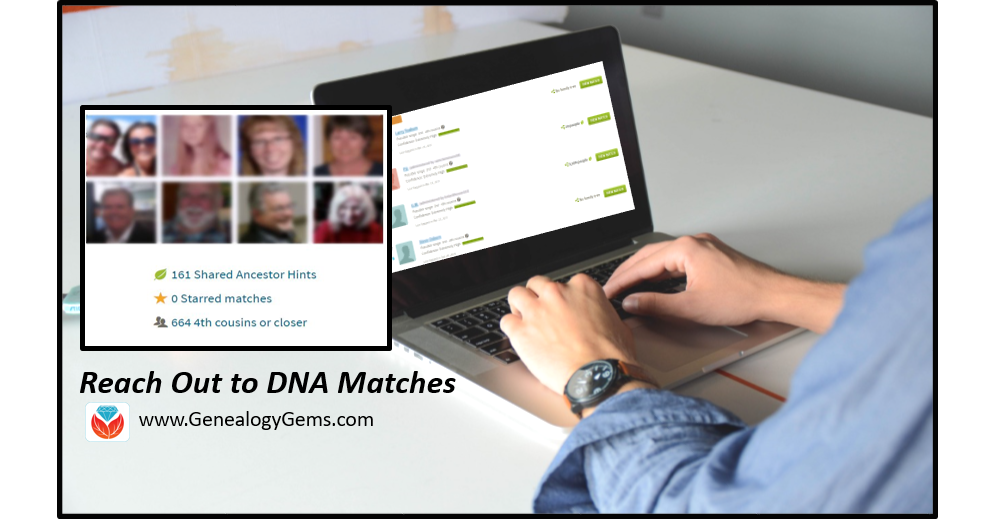
Contact Your DNA Matches
Recently, I heard from Genealogy Gems Premium website member Ruth*, whose DNA success story reminds me of the value of reaching out to DNA matches, even if the general response rate is low or slow. She says:
“I’ve been researching my family tree for over 20 years and sometimes it can get boring…because most of the lines are pretty much out as far as I can go and I’m now just working on brick walls! I love listening to your podcast because it motivates me to keep going!
Like many of your listeners, I have taken the autosomal DNA test. It has been an awesome tool helping me confirm family lines and sometimes finding new ones. However, I’m sure most of your readers know that for some reason a lot of those DNA matches and even tree owners in general, do not respond to emails or messages. It can be very frustrating, especially if it is one of those lines that you really could use some help on. The lack of response to inquiries sometimes makes me wonder if I should even try to make contact. Well, I want to tell your listeners, that yes it is worth it.
Recently, I was browsing trees and I came to a tree that listed my 3rd great-grandfather Daniel Cannon; however, this tree listed Daniel’s wife as Mary Ann Watkins and I had her as Mary Ann Cook! Well, I decided to contact the owner of that tree and explained I had Daniel’s wife as a Cook. The two of us started emailing back and forth and I found out this gentleman, whose last name is Watkins, had taken a DNA test and was in Ancestry.com’s database.
Sure enough, when I searched my mom’s matches I found him. Mr. Watkins shared the information he had [which was] an excerpt that listed the heirs of G. B. Watkins and Elizabeth Smith. On that list was Mary Ann Constable. From the census records, I knew that Mary Ann Cannon had married Thomas Constable after her husband had died. The marriage license for Mary Ann Cannon and Thomas Constable is no longer at the courthouse, but I was able to get a copy of the excerpt of the book it was recorded in. So now I’m climbing a whole different tree!
So, go ahead and reach out to those matches or those people who have trees with different information from you. You never know when you’ll find information and end up with a new line to research!”
Time to Maximize Your DNA Matches
 Our resident genetic genealogist, Your DNA Guide Diahan Southard, has written a series of 3 DNA quick guides to help you maximize your DNA testing experience:
Our resident genetic genealogist, Your DNA Guide Diahan Southard, has written a series of 3 DNA quick guides to help you maximize your DNA testing experience:
This “value pack” can help you sort your matches more wisely, reach out to them in a positive way, and track your correspondence. Click here to read more about these guides and order your own. (Also available as digital downloads.)
Time to Test Your DNA Today
These companies all provide autosomal DNA testing, the most popular kind of DNA testing, and the kind Ruth used. Autosomal testing matches you to genetic relatives on both sides of your family tree to a depth of about 4-6 generations. Learn a little about each by clicking on the names below.
Ancestry DNA
MyHeritage DNA
23andMe
FamilyTreeDNA
*Ruth’s letter was erroneously attributed to Liz when it was shared and discussed in Genealogy Gems Podcast episode 200. Sorry for the mix-up!
by Lisa Cooke | Mar 20, 2017 | 01 What's New, DNA |
Your DNA test results come with raw DNA data. This raw data is the next piece in your DNA puzzle. Your DNA Guide, Diahan Southard, shares some interesting facts about raw DNA data and its use. Dig in and learn why!
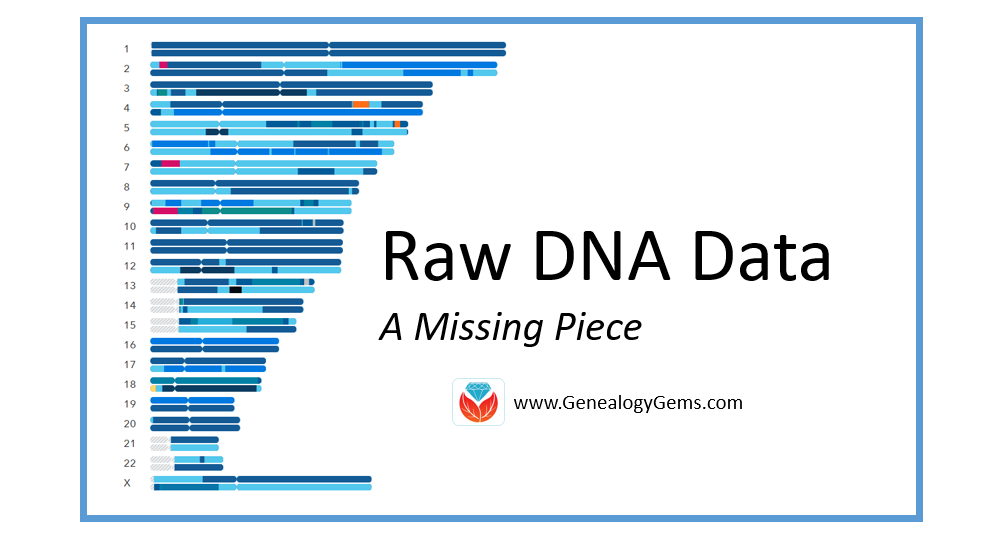
What is Raw DNA Data?
Raw DNA data is the actual output file created by the DNA testing company. You can access your raw data at each testing company, and I strongly encourage that you do. You will need to download and save your raw data results to your computer. For instructions on how to do this, head on over to this page on my Your DNA Guide website.
This file contains your little DNA values at over 700,000 locations tested by your testing company. Any company with the right set-up and analysis tools can help you find matches with other people, and make additional genealogical discoveries. They may also be able to tell you if you like cilantro and are likely to have high blood sugar!
Raw DNA Data Research Projects and Destinations
Raw DNA data has to have a place to go. There are several research projects underway that utilize your data from any of the big four testing companies (Family Tree DNA, 23andMe, MyHeritage DNA, and AncestryDNA) for various genealogical or genetic purposes.
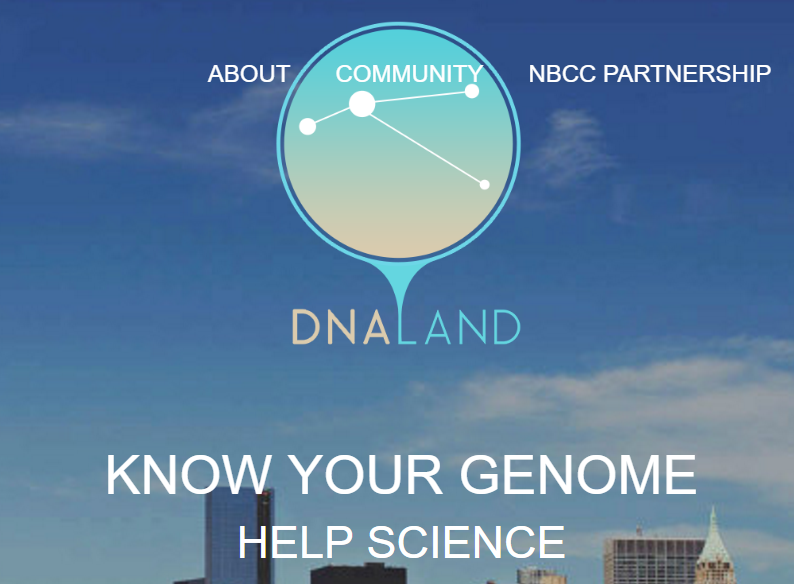
Home page of the DNA Land website
Let’s look at four examples of places you might upload your raw DNA data.
1. Family Tree DNA. If you have tested at 23andMe or AncestryDNA, you can transfer your raw data file to Family Tree DNA for free! You can access all of your matches and use the matching tools. For an additional $19, you can get access to the ethnicity features and other tools.
2. DNA Land. The not-for-profit DNA Land has over 26,000 individuals who have voluntarily uploaded their autosomal DNA test results into their website to be used for research purposes. Their self-stated goal is to “make genetic discoveries for the benefit of humanity.”
3. MyHeritage. MyHeritage also accepts your raw DNA data for incorporation into their genealogical database. You can upload your results for free and receive access to matches along with the ability to contact them. For a one-time fee of $29, you can unlock access to all of MyHeritage DNA’s features and tools as well. Learn more and upload your data here.
4. Geni.com. Geni.com (a family tree collaboration tool) jumped on the DNA bandwagon and announced they too would be integrating DNA into their family tree tool. Utilizing a partnership with Family Tree DNA, Geni.com is utilizing all three kinds of DNA (autosomal, YDNA, and mDNA) in their offering. The interface looks much like what you would see at your testing company: a list of matches with some family tree information.
The biggest takeaway from the recent influx of destinations for your raw DNA data shows us that the integration of DNA into genealogy is in full swing. I estimate every genealogy company and every major genealogy software will offer some kind of DNA integration within the next five years. DNA has certainly earned a permanent spot as a genealogical record type!
A Word of Caution
With all of these options available, and surely more to come, you will want to be careful about who you are giving your raw data to. Make sure you are comfortable with the company and its goals. Be sure you understand what role your DNA will be playing in their research, as well. These are exciting times in the world of genealogy.
Take the Next Steps in Your DNA Journey
 Wherever you are in your DNA journey, we can help!
Wherever you are in your DNA journey, we can help!
Take your very first steps and learn how to get started using DNA testing for family history.
If you have already taken the plunge, learn how to harness the power of DNA matching.
For the most help in understanding DNA for family history, take a look at the ten different DNA guides in both print and digital form from Your DNA Guide, Diahan Southard.
by Lisa Cooke | Feb 27, 2017 | 01 What's New, DNA, Health History |
Exploring our family health history is just another reason to look forward to the future of DNA testing. As science advances and we find out more regarding the specific genetic code responsible for various nefarious outcomes in our health, we learn there is more in play than just our genetics.
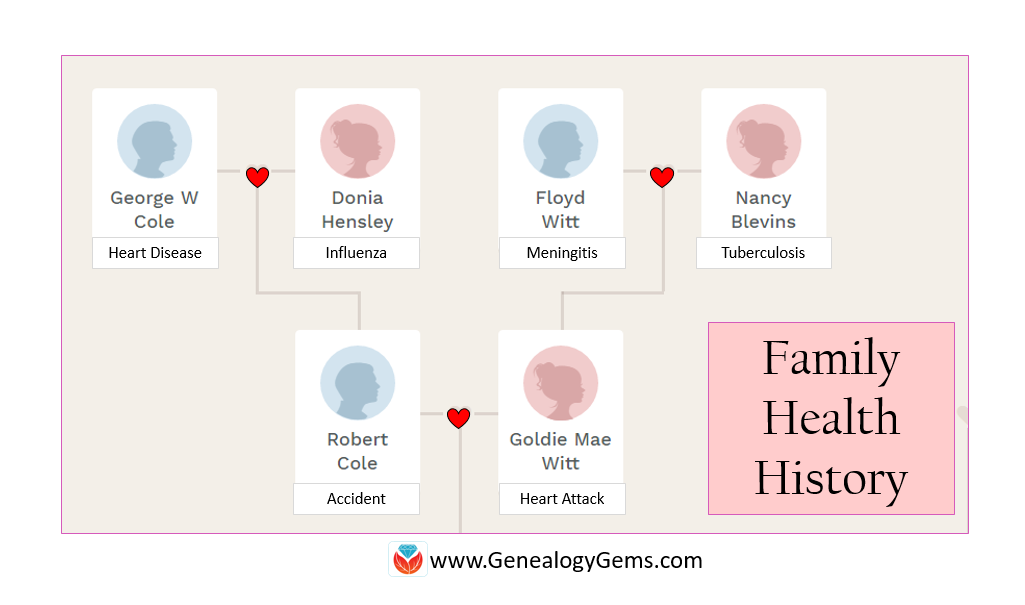
I recently read an article in the Wall Street Journal about a family who has been plagued with sudden deaths, ten in recent generations. Without warning, their hearts were stopping and no one knew why. That is until Daniel Wiggins died suddenly at the age of 29 and his family sought out a molecular autopsy. Becoming more accessible to researchers as the cost of running these tests drop, molecular autopsies allow a scientific team to analyze the DNA of the deceased, looking for genetic clues to the cause of death. In this case, the genetic sleuthing was able to turn up the perpetrator: a mutation that alters the electrical signals in the heart, causing it to stop. [Read more about this here.]
While this case was clear-cut and the gene was acting seemingly alone without an accomplice, researchers of this disorder say it only happens in 20% of cases. Which means, this devious genetic criminal has other methods we still haven’t tracked.
But for Daniel’s family, they can pursue genetic testing to determine if this specific culprit is lurking in their own genes. If found, they can take precautionary measures, like having a defibrillator installed.
Doing Our Part
Similarly, a family from Pennsylvania used their family reunion as a format for gathering family history and genetic information in order to arm its members with an action plan against a plague of cancer that is sweeping through their family. [See an article on this family here.]
Several members of the Shaffer-Peterson family have discovered a genetic test can alert them to possible pancreatic or skin cancer. Again, a gene affecting a very small number of melanoma patients was identified as the perpetrator of the Shaffer-Peterson family and has been given a 67% crime rate. This means that the chance of developing cancer if you have this particular gene is elevated by 67%.
Thankfully, melanoma is a particularly curable kind of cancer when caught early. This family has done their part in informing the family as a whole. And, they now have a sort of insurance plan that may protect the lives of their loved ones.
For both the Shaffer-Petersons and the family of Daniel Wiggins, genetic tests produce actionable results to those testing positive. There is something they can do to positively impact their health once they are aware of the presence or absence of these genes in themselves.
Environment or DNA?
Not all diseases or conditions can be attributed to our DNA. This past fall, after talking with my mother about kids and schedules, she added almost in passing, “Oh, by the way, they found another spot on my back, I am going to have it removed next week.” This is the third melanoma spot she has had removed in the past 5 years.
While my mom’s melanoma is less likely to be the result of a genetic abnormality and more likely linked to spending hours lifeguarding at the local pool, the fact she had melanoma was the sole reason I went to the dermatologist. My spot wasn’t cancer. I was just getting older. But, I am glad I went and I feel like knowing my health history has made me more aware of the measures I can take to improve it.
Tracking Your Family Health History

Diahan offers Genealogy Gems fans a discount on access to her series of videos on understanding DNA testing for genealogy. Click here to learn more.
For most people, molecular autopsies and DNA health tests are not easily available. Not yet. For those that are, there are hundreds of questions surrounding the kinds of genetic tests and the implications for both health and legal issues.
One thing is certain. In these cases, the common thread is family history. We need to know not only the dates and places of our ancestors lives and deaths, but also the stories behind them. Whenever possible, we need to track our health history, so we can identify any trends that our DNA might be trying to tell us.
If you want to start tracking your own health history there are plenty of free and subscription online tools to get you started. In particular, TapGenes was the winner of the 2016 Innovator Showdown at RootsTech. This online and app tool is designed specifically for your family health management.
You can also create your own alternate family tree. In this unique way, you can visually look at age-at-death, diseases, or other factors pertaining to your health. Read our article titled, “How and Why to Create an Alternate Family Tree.”
Learn More About Genetics and Genealogy
 This special bundle features the 3 new advanced DNA guides by Diahan Southard!
This special bundle features the 3 new advanced DNA guides by Diahan Southard!
Digital download also available.
Gedmatch: A Next Step for Your Autosomal DNA Test
Gedmatch is a third‐party tool for use by genetic genealogists seeking to advance their knowledge of their autosomal DNA test. This guide will navigate through the myriad of options and point out only the best tools for your genetic genealogy research.
Organzing Your DNA Matches
With over 2.5 million people in the possession of a DNA test, and most with match lists in the thousands, many are wondering how to keep track of all this data and apply it to their family history. This guide provides the foundation for managing DNA matches and correspondence, and for working with forms, spreadsheets, and 3rd party tools.
Next Steps: Working With Your Autosomal DNA Matches
This guide outlines what to do next to maximize the power of DNA testing in genealogy. With this guide in hand, genealogists will be prepared to take their DNA testing experience to the next level and make new discoveries about their ancestors and heritage.
by Lisa Cooke | Feb 20, 2017 | 01 What's New, DNA, Kids |
DNA testing for kids is a great way to spark their interest in their heritage, while teaching science, math, geography, and more. Consider these reasons and start with the budget-friendly option of an autosomal test.
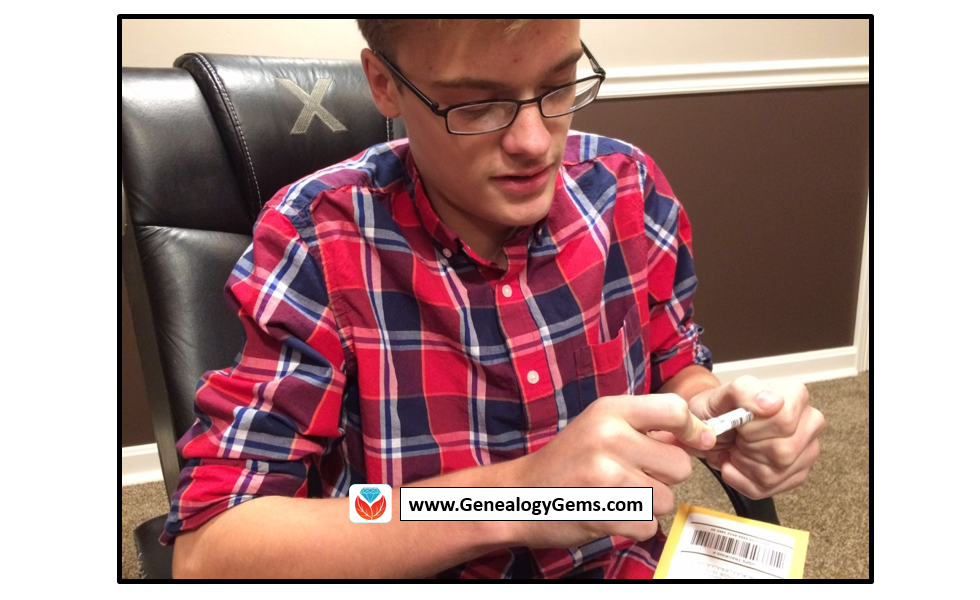
According to a 2010 study out of Emory University, if we want to encourage kids toward an activity that will positively impact them, we should steer them toward family history. The researchers reported, “Children who know stories about relatives who came before them show higher levels of emotional well-being.”
Now, I know I don’t need to convince you of this. You are already sold on genealogy. But let’s explore how DNA testing might be able to help you share your love of family history with your children and grandchildren.
Why Try DNA Testing for Kids
Since you know this is me, the genetic genealogist talking, you can probably guess what I’ll suggest for getting kids interested in family history. DNA testing is a great way to personally and physically involve them. There is the tangible process of taking the sample at home, and the marvel at how such a simple act can produce the amazing display of our ethnicity results. Since each of us is unique, it will be fun for them to compare with you and other relatives to see who-got-what-from-who. This will naturally lead to questions about which ancestor provided that bit of Italian or Irish, and wham! You’ll be right there to tell them about how their 5th great-grandfather crossed the ocean with only the clothes on his back, determined to make a new start in a new land.

If there are parts of the ethnicity report you can’t explain, use that as a hook to encourage them to start digging and to find out why you have that smattering of eastern European or Southeast Asian. Taking them for a tour of the DNA match page, you can show them how they share 50% of their DNA with their sister (whether they like it or not!) and how they share 25% with their grandparent!
DNA test results give kids a totally unique look at their personal identity with technology that is cutting edge. Looking at their DNA test results can turn into a math lesson, a science lesson, a geography lesson, a lesson on heredity or biology, or a discussion on identity. DNA is the perfect introduction to the wonders that genealogy can hold, especially for children.
A Warning and Caution
As with all DNA testing pursuits, this one should not be taken lightly, even with all of its benefits.
An important word to parents: Be sure to keep unintentional consequences in the forefront of your mind. This includes the possibility of revealing family secrets. Talk with your spouse and make sure you are both on the same page. In the end, this is your decision.
An important word to grandparents and other relatives: DNA testing is a parent’s decision. Even though you’re passionate about preserving the family’s history and the benefits of including children are numerous, you must obtain parental consent if you are not the parent.
More About Autosomal DNA Testing for Kids
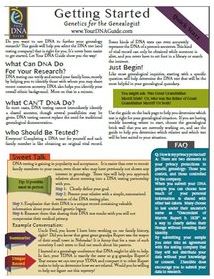 Click here to learn more about my series of how-to videos (available to Gems fans for a special price) or start your kids’ or grandkids’ DNA journey with two of my genetic genealogy quick guides. The first is a great overview and the second talks about autosomal testing which is a good test for genetic genealogy beginners.
Click here to learn more about my series of how-to videos (available to Gems fans for a special price) or start your kids’ or grandkids’ DNA journey with two of my genetic genealogy quick guides. The first is a great overview and the second talks about autosomal testing which is a good test for genetic genealogy beginners.
by Lisa Cooke | Feb 6, 2017 | 01 What's New, DNA |
Sometimes history provides us with a situation that is just too outlandish to be false, like this one on mDNA testing for genealogy by using ancient ponytails! In these lucky, true-to-life conditions, clues to help us unravel genealogical mysteries and tell our own crazy stories might just be found.
![By GrammarFascist (Own work) [CC BY-SA 4.0 (http://creativecommons.org/licenses/by-sa/4.0)], via Wikimedia Commons mDNA testing on ancient ponytails](https://test.lisalouisecooke.com/wp-content/uploads/2017/01/Dreadlocks_attribution-needed.jpg)
English Mutineers Create Endogamous Population
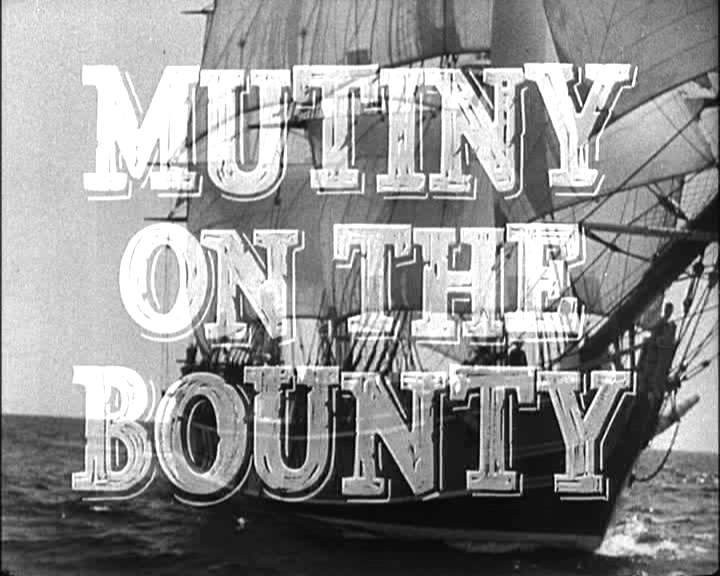
By Trailer screenshot (Mutiny on the Bounty trailer) [Public domain], via Wikimedia Commons
And when I say tiny, I mean tiny. 1.75 square miles tiny.
But considering that 9 English mutineers, their Tahitian brides, and a couple Tahitian men were the founding population for this island, it provides an amazing genetic and genealogical view into endogamous populations.
The Proof is in the Pigtails
This fascinating tale is about to get richer, as ten pigtails of hair claiming to be from some of the original mutineers and their wives, have recently been acquired by the Pacific Union College’s (PUC) Pitcairn Islands Study Center in California. The King’s College London has contracted them to perform DNA testing.
Pay close attention to this next part: Researchers are going to conduct DNA testing on the hair samples. But this does not mean you are going to be able to test the locks of hair stowed away from one of your ancestors!
Why, you ask?
First barrier: Cost. This process of trying to extract DNA from a hair sample, especially a very, very old hair sample is meticulous work. It will cost the average consumer a pretty penny. And, you may not be able to find a DNA testing company who wants to do it for you. All major genetic genealogy companies will just flat out tell you “no.” Most paternity testing companies will require your hair has the root attached. In fact, in my quick search, I can’t even find one DNA testing company that will attempt to get DNA from your lock of hair.
Second barrier: Results. Even if you could get a lab to extract the DNA for you, the only available DNA type retrieved from a cut piece of hair is mitochondrial DNA (mtDNA). The mtDNA will trace a direct maternal line. This is opposed to the YDNA that traces a direct paternal line and the autosomal DNA which traces both sides of your family tree. Even if they do get mtDNA from your sample, it is likely to be damaged and incomplete. Therefore, the best you will likely get is an assessment of your deep ancestral origins.
For you, that might not be quite enough to determine and document your family history. But for those interested in verifying this story of mutineers settling in the Pitcairn islands, it might be.
Will it Work?
If they do get mtDNA from the 10 pigtails, they will get 10 mtDNA lineages represented. Those stemming from the mutineers should have their deep origins in Europe, while their Tahitian brides will have a very different mtDNA signature. Likewise, if an mtDNA signature can be obtained, then the mtDNA of those still living in Pitcairn and nearby Norfolk (where many went in 1857) should match these pigtails. If it does, they can measure how many of the current residents are directly maternally related. Of course, in order to truly verify the claims, some serious genealogy work must be completed.
I will be watching this story closely over the next few months as research progresses. If successful, this will be another victory for the rarely celebrated mtDNA. This study shows that if your goals are understanding deep heritage, or testing out a particular hypothesis on your maternal line, mtDNA can be a useful option.
While the DNA studies you read about in the paper won’t always be something you can learn from, others are. Take for example the stories I shared several months ago on the Genealogy Gems podcast and blog about DNA confirming the love affair of President Warren G. Harding and the story of how experts proved it was King Richard III buried under that parking lot. You can definitely learn about using DNA for genealogy from these very public examples!
More on mDNA Testing for Genealogy
When to Do an mDNA Test for Genealogy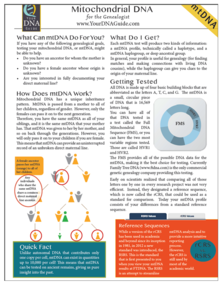
mDNA Quick Guide for Genealogists by Diahan Southard
Page 5 of 17« First«...34567...10...»Last »

 Our resident genetic genealogist, Your DNA Guide Diahan Southard, has written a series of 3 DNA quick guides to help you maximize your DNA testing experience:
Our resident genetic genealogist, Your DNA Guide Diahan Southard, has written a series of 3 DNA quick guides to help you maximize your DNA testing experience:


 Wherever you are in your DNA journey, we can help!
Wherever you are in your DNA journey, we can help!




![By GrammarFascist (Own work) [CC BY-SA 4.0 (http://creativecommons.org/licenses/by-sa/4.0)], via Wikimedia Commons mDNA testing on ancient ponytails](https://test.lisalouisecooke.com/wp-content/uploads/2017/01/Dreadlocks_attribution-needed.jpg)





